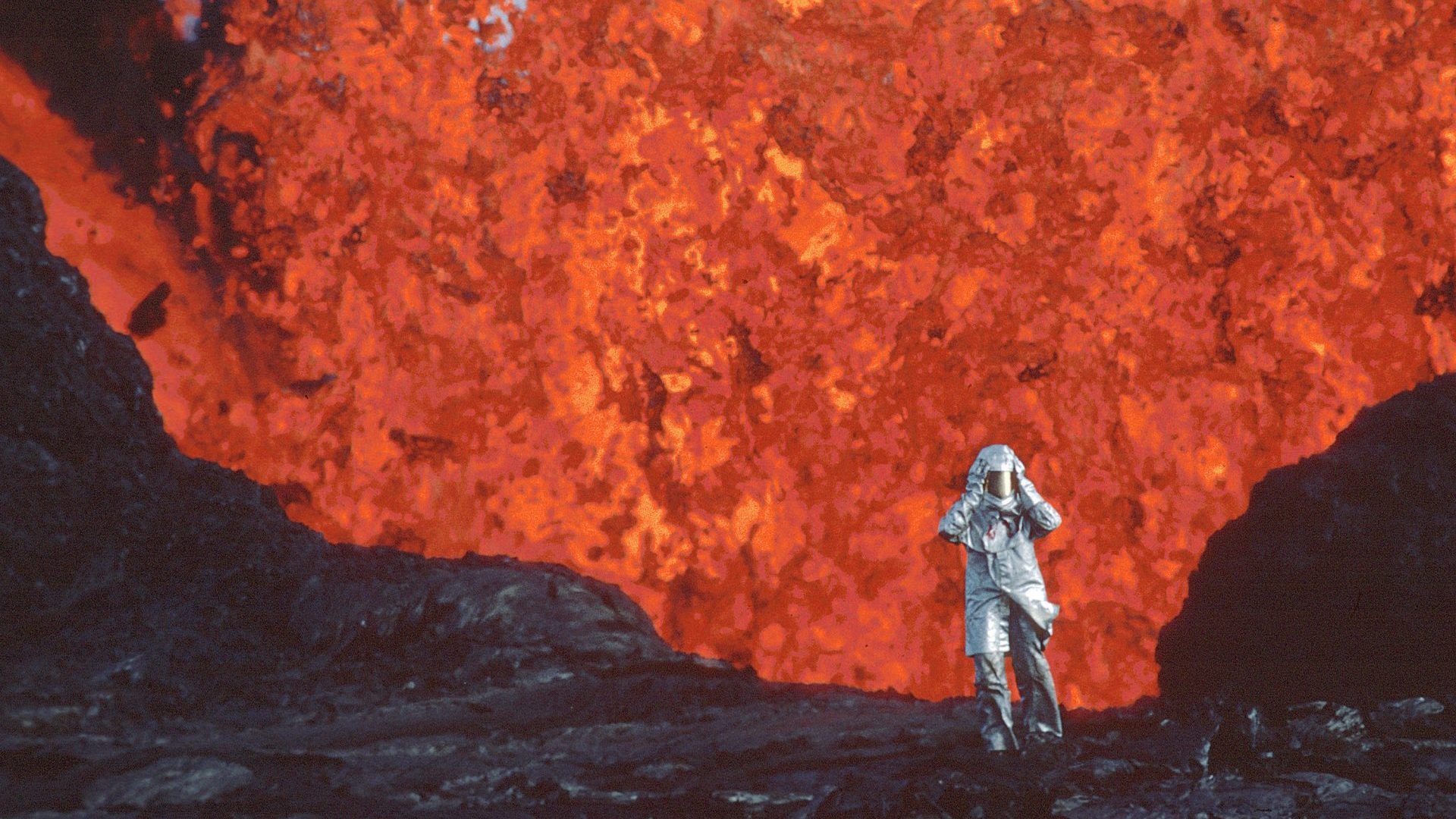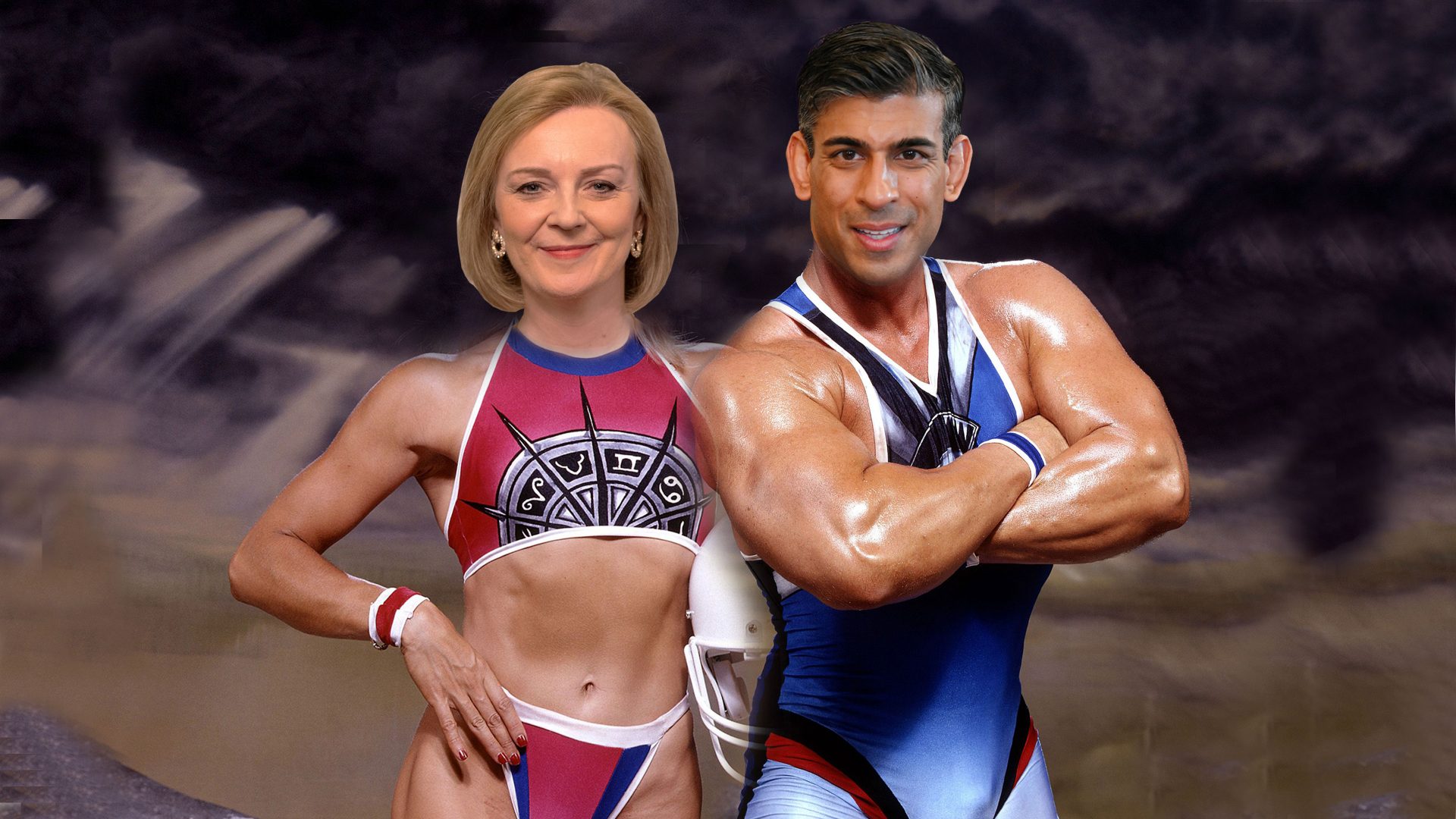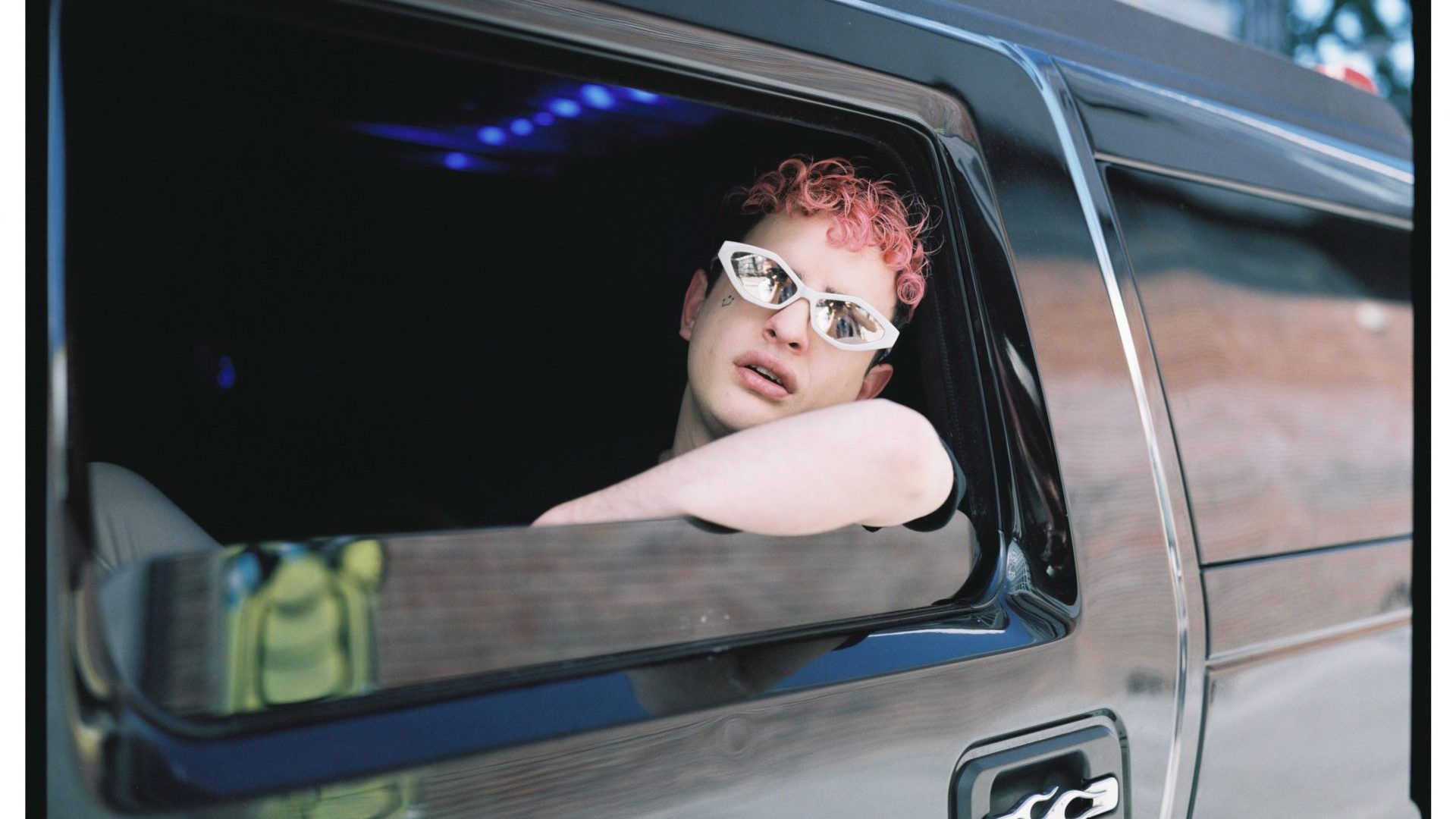There used to be an old, bad joke about two volcanologists who fell in lava.
In the case of Maurice and Katia Krafft, it’s no joke at all. In the 1970s and ‘80s, the Kraffts were world’s best-known volcano experts, regulars on French TV news and travel shows, authors of 20 books, lecturers, teachers, explorers, lovers. And in the 1990s, they died doing what they loved.
They took the most remarkable risks to get up close and shoot and photograph the most extraordinary and indeed revolutionary images of volcanic activity. Clad in protective silvery suits and helmets, they look like the Tin Man, standing not by a yellow brick road but a river of molten orange and black.
Now their lives and images have been immortalised in a new documentary, Fire of Love, one of the year’s best and certainly most beautiful films, a movie that rumbles and thunders and resonates. Made up entirely of archival footage, it’s directed and written by Sarah Dosa, a contemplative piece as profound as it is thrilling, peculiar and crazy
We watch this pair of eccentric adventurers, who really wouldn’t be out of place running the local boulangerie in a village in Alsace, teeter on the brink of furnaces, dangling into the abyss, camped out on rocks for nights on end hoping to avoid flying lava bombs. And for breakfast, Maurice cracks a couple of eggs into a pan and fries it all up on the rocks next to him.
What were they looking for, this odd French couple fused together by their passionate volcanology?
“Love, mostly… I think,” says director Sara Dosa. She’s speaking to me from Paris, on the night of her film’s French premiere as part of the annual outdoor Cinema Paradiso festival in the Louvre’s Cour Carrée, a very romantic setting.
“It’s a very romantic film,” she agrees. “It’s about volcanoes, certainly, but it’s about this couple who lived a rich and meaningful life that was full of love and fuelled by a shared love of some kind of danger.”
Dosa sees it as a love triangle between Maurice, Katia and their volcanos. It’s no spoiler to tell you the pair died, consumed by a volcano in Japan in 1991. To say ‘it’s how they would have wanted to go’ is for once totally apt. And despite knowing how it all ends, Dosa manages to churn up our emotions along the way, as we get to know these intrepid lovers.
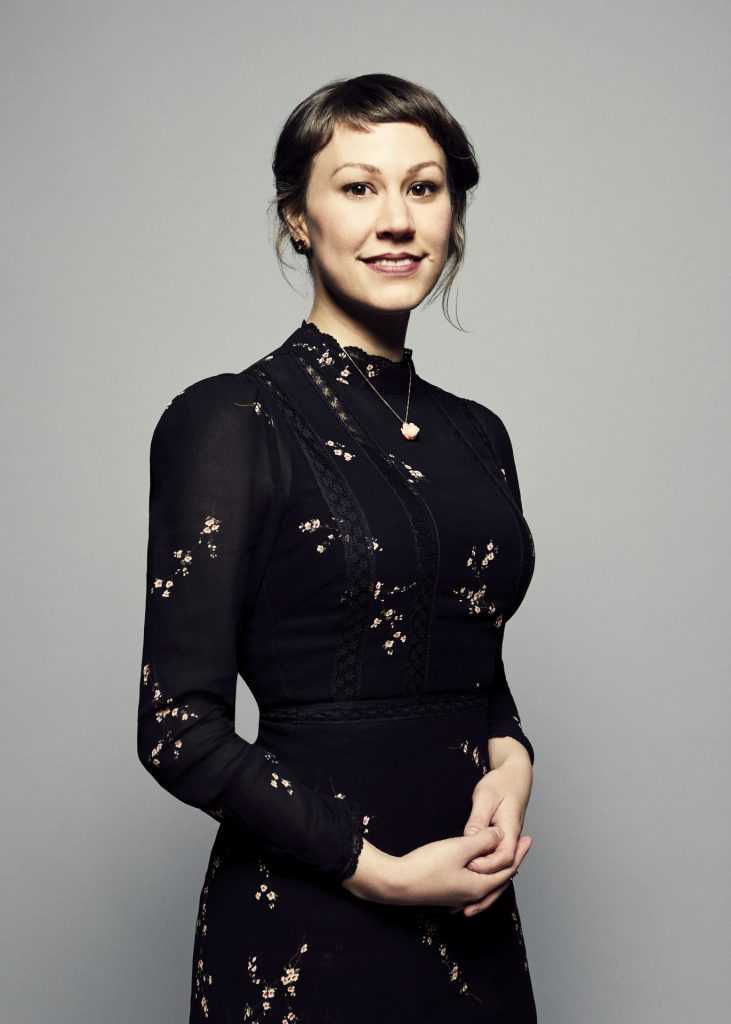
They left behind them over 200 hours of film and 50 hours of TV appearances, either being interviewed on those French talk shows and evening shows with audiences and moustachioed hosts, or on natural world shows where they’re interviewed at home and at work and asked about their relationship, or what it’s like being the world’s only volcanologist couple.
We see them banter and pretend their relationship erupts from time to time. But they look for the most part calm. They don’t really argue, not that we can see. I don’t know if little red beanie hats were de rigueur for all French explorers in the post-Cousteau media landscape, but they certainly sported those, in homage or in parody or blatant imitation. In many ways, they’re the polar opposite of Cousteau, who went to the ocean floors while these two scaled the earth’s peaks.
“There were definitely very savvy performers,” says Dosa. “They cultivated a personality and an image and seemed happy to live up to it. They needed funding to pay for their expeditions, so they knew they needed to keep a profile. But that’s something they grew into. It wasn’t the spark. that set them off.”
Although they grew up in post-war Alsace just 20 km apart, nobody quite seems to know how they met, Maurice and Katia, nor where they discovered their mutual fascination with lava. Maurice did go on holiday to Stromboli when he was nine and says he became obsessed then. I went to Stromboli on my honeymoon and I’m still with my wife, so maybe there’s something in it. We do like to put the fire on in winter…
But Maurice and Katia hurtle towards danger, going ever closer to the bubbling cauldrons. The images of them backlit by spurting walls of orange are amazing. You do get to thinking they’re crazy. Or you might. It doesn’t feel like Sara Dosa did.
“I was struck by their quest to lead a meaningful life and to have a meaningful death,” she says. “It felt very authentic to me, to be driven by science, adventure and love. When they started, so little was known about volcanos that there was a world of knowledge to acquire and impart. They set off to find answers. So that gave them purpose and meaning. I don’t think they were crazy at all.”
Were they hot lovers, then? What did they get up to in their little tent on the hot rocks?
“I’ve always wondered that!” she exclaims. “So much of our research is unrequited. For all their books and the footage, the more I got to know them, the more I wanted to ask and just as they could never really know their volcanos, I could never truly know Maurice and Katia, the depths and vagaries of their relationship and the complexities of intimacy.”
Dosa says that making a documentary wholly comprised of archive footage is a risk of finding holes, that dead ends appear and questions remain unanswered. “And this film was about science, so there’s a ton of research to do but science can only answer so much – there are hypothesis and unknowns, words and emotions lost to time and I had to make that mystery part of my film’s artistic grammar.”
Her doc nevertheless plays out like an adventure movie. We go from Iceland to the DRC’s Nyiragongo in the 1970s, to Mt St Helens in the ‘80s, to Indonesia’s Anak Krakatoa (which is west of Java, unlike in the title of the old movie). If there’s an eruption, the Kraffts are always there, either in time or for the aftermath, with their “equipe volcan”, like a patchwork Avengers Assemble of existential French explorers pondering the meaning of life while sweeping up ash or gazing at falling rocks of fire.
They liken themselves to travelling players, “freelance volcano runners”, Maurice calls them. Maurice has an ambition to canoe down a river of lava all the way to the sea, sounding as easy as one of those white-water rafting trips on a family safari holiday. He’s got it all worked out. I’m not sure he achieved this particular ambition though we do see him set out on a lake of sulphuric acid in nothing but a second-hand rubber dinghy bought at a flea market. “Curiosity is stronger than fear,” he muses.
It also killed the cat. We see quite a few dead animals – birds covered in lava instantly petrified, and even entire elephants imprinted in the rock, their trunks raised as if to herald out a warning. Death is never far when you are up close with the elements of life.
“Maurice says that volcanos defy classification,” recalls Dosa. “He sees them as individuals, renegades, rebellious forces who create and destroy to create again. Maybe he saw himself and Katia that way, too? They went towards these destructive dangers all the while knowing they could never fully understand them, and all the while knowing their lives could be ended in an instant by pursuing this love. They reconciled their relationship to death that way.”
I know nothing of volcanoes really. I’ve been up Stromboli and Vesuvius and taken my children to the rather scary skeletons at Herculaneum. I’ve watched Ennio Morricone conduct an orchestra at Taormina while Mt Etna fulminated in the distant background. Yet having watched Fire Of Love, I can say I know a lot more, and I learned a simple rule: the red ones are friendly; the grey ones are killers.
The geology and science of it may pass by most viewers of the film. It’s not that kind of a movie, really. Swept up in music from Brian Eno, and French pop from Dalida, and tunes from Air and a new score from half of that duo’s Nicholas Godin (who played a live concert at the Louvre after the film’s premiere), you find yourself contemplating existence itself.
Like valves, these open rocks have a musicality as the beating heart and the flowing blood of our planet. I was agape. At the screening in London last week, I heard a fair few exhalations of “Blimey”. What did all this study of the images do to Sara Dosa?
“I became aware of the true sentience of our planet, that’s for sure,” she reflects. “I have a lot to contemplate on how making this film has impacted me. Not just the power of these forces, but the intelligence, the interconnectivity of the earth, how alive it is, how it’s talking to us so majestically and so terrifyingly. That’s what Maurice and Katia’s work brings home. We have to listen to the earth. I think that’s what the volcanoes tell us, that the earth is powerful and we need to respect it.”
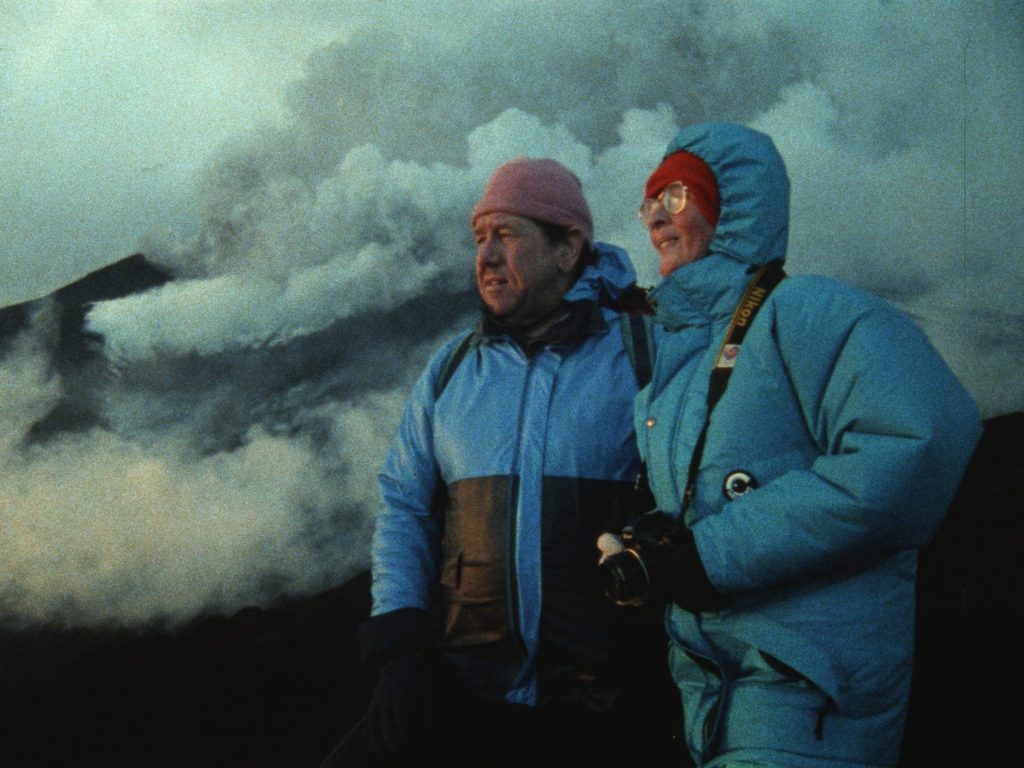
“What will survive of us is love,” said Larkin. He was talking about the “faithfulness in effigy” on an Arundel tomb but he might have thought the same of those bodies at Pompeii, or indeed of Maurice and Katia Krafft who died filming the eruption at Mount Unzen in 1991, consumed by the blast, taken by the thing they loved. It would be romantic to think of them petrified in embrace, like the earl and countess in stone on Larkin’s tomb, “the little dogs under their feet”.
The truth is probably grislier as they watched the oncoming cloud of ash and fire, as we do courtesy of a fixed camera left by one fleeing journalist. Maurice and Katia, we presume, faced their death. Maybe they held hands and whispered “I love you” as the blast approached, before they met their end together
“There is definitely sadness still,” says Dosa. “They were real people who were much loved by family, who still miss them every day, although they made a pact never to have children themselves, perhaps to avoid such ties. But there is celebration, too, that they lived life in accordance with their values and, as one of their friends wrote, that when they passed away, ‘they became one with their volcano at last’.
“So they become part of an eternal cycle of creation and destruction but they leave an imprint, a legacy and they live on through their work and images. It’s very beautiful.”
Fire of Love is in UK cinemas now and will be opening at the Cinedrome at Greenman Festival on August 18.


